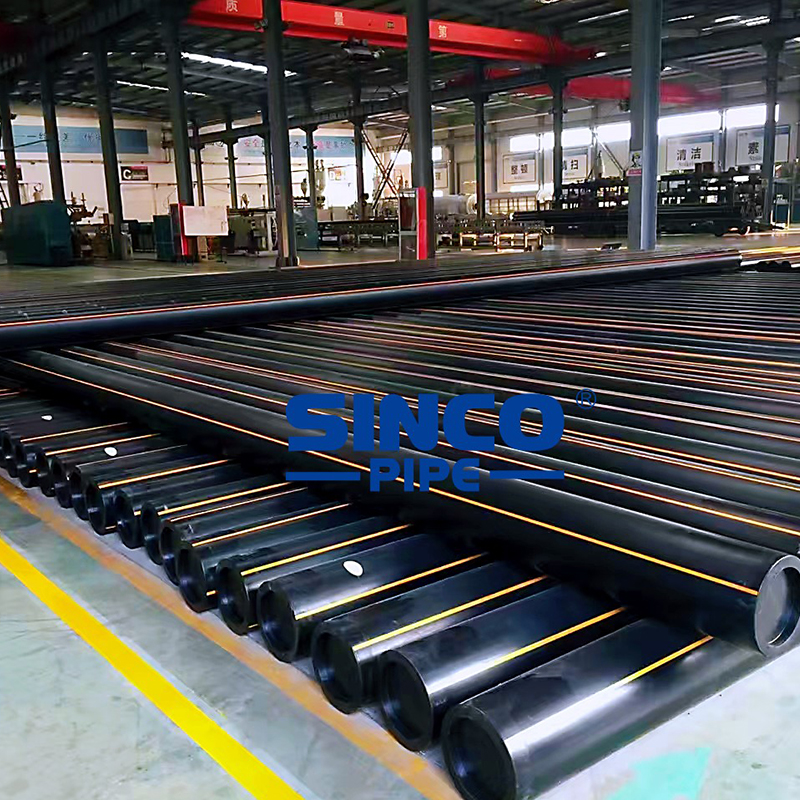Your Position: Home - Rubber & Plastics - Market demand for HDPE pipes
HDPE pipes are becoming more and more popular due to their outstanding corrosion resistance, temperature resistance, wear resistance, no pollution to the transportation medium, long service life, low manufacturing and installation costs, etc., and are used in gas transmission, water supply, heating, construction, etc. It has been widely used in water supply and drainage and other fields, and its usage has increased rapidly in recent years. Currently, HDPE pipes rank second in usage among plastic pipes, second only to PVC pipes. Gas pipes and small and medium-diameter water pipes have an absolute advantage among plastic pipes, with a market share of over 90%. Others such as corrugated pipes, water pipes, oil and gas pipes, mining pipes and agricultural drip irrigation pipes are also important markets for HDPE.
The rapid development of the construction and housing industry markets has provided a broad market for HDPE pipes.
Drainage facilities_projects have become a hot spot in infrastructure construction, and the establishment of new drainage pipe networks has created unprecedented development opportunities for plastic buried drainage pipes. According to the experience of developed countries, underground drainage pipes have the greatest market potential, which include urban and rural sewage pipes, rainwater pipes, and industrial sewage pipes.
wait.
The second largest consumption of plastic pipes is urban and rural water supply pipes. Replacing metal pipes with plastic pipes as water supply pipes to prevent secondary pollution of water quality due to corrosion of metal pipes has become the development direction of the world today.
Plastic pipes for building water supply and drainage will have a larger market share occupied by PE hot and cold water pipes. Especially among plastic pipes and cold water pipes for buildings, PE pipes have the most competitive advantage.
Generally, oil and gas pipelines are mainly made of HDPE and MDPE with good pressure resistance, corrosion resistance and pipe joint sealing properties. According to internationally mature and recognized experience, HDPE pipes should be used for laying gas pipes.

Sewage reuse is one of the important ways to save water and will have great development in the future. The demand for pipelines to transport recycled water will increase sharply.
If plastic pipes are used to replace traditional pipes such as cast iron pipes and concrete pipes, the leakage rate can be reduced by about 15%, and the economic losses caused by water leakage can be reduced by half, which has obvious social and economic benefits.
Among the new agricultural water-saving irrigation technologies, plastic pipes occupy an important position, and their development prospects are also very optimistic. Especially in arid areas, agricultural irrigation, drip irrigation, and micro-irrigation will have great development.
HDPE pipes can be inserted into pipelines to update and repair old pipelines. HDPE pipes can form a new pipe structure after being inserted into metal or concrete pipes, which combines the anti-corrosion properties of HDPE pipes with the mechanical properties of metal materials, thus greatly improving the overall performance of the pipeline and extending its service life by 40 ~ 50 years. This construction method has been adopted in the United States, Germany, the United Kingdom, Sweden and other countries. According to the information, they have used this method to replace natural gas pipelines, water pipelines and thermal power plant water pipelines, and achieved good results. The use of HDPE pipe interleaving method to update old pipelines has advanced technology, convenient construction, fast speed, low cost, good social benefits, and has high application and promotion value.
With the development of science and technology, water well drilling projects have been accelerated, and engineering well pipes and water filter pipes have transitioned from metal pipes to plastic pipes. This is the current general trend of foreign development and the only way for my country's development.
Cross-linked polyethylene pipes, due to their superior performance and social benefits such as energy saving, consumption reduction, and environmental pollution reduction, are a sustainable multi-purpose, high-quality, high-tech, and high-value-added new product with broad applications. prospects and market potential. It can be widely used in hot and cold water pipes, drinking water pipes, water pipes in air conditioning systems, gas water heater inlet and outlet pipes, floor heating pipes, heating pipes, gas pipes in cold areas, etc. in construction projects. It will become the water supply pipe for buildings in the 21st century. Main pipes for hot water and gas pipes. In addition, it can also be used as a transportation pipe for liquid foods such as milk drinks and jams in the food industry, and a transportation pipe for chemical liquids and gaseous organic solutions in the chemical industry.
HDPE pipes will also have rapid growth in communication pipes and pipes in petroleum, chemical industry, coal mines and other departments.
Due to the unique properties of polyethylene pipes, a very noteworthy trend in the world in recent years is that the development of polyethylene pipes is significantly faster than the development of PVC pipes, especially the application of HDPE pipes. In the European market, the proportion of HDPE pipes has reached nearly 30%. The application volume of PE pipes in the fields of drinking water pipes, gas pipes, industrial pipes, agricultural pipes, and heating indoors has exceeded that of PVC pipes. Even in sewage /The development of PE pipes in the field of drainage pipes and sheathing pipes is also quite rapid. Seize the opportunity at the right time
Purchasing and using HDPE pipes will definitely produce significant economic benefits and good social benefits.
202
0
0
Comments
All Comments (0)